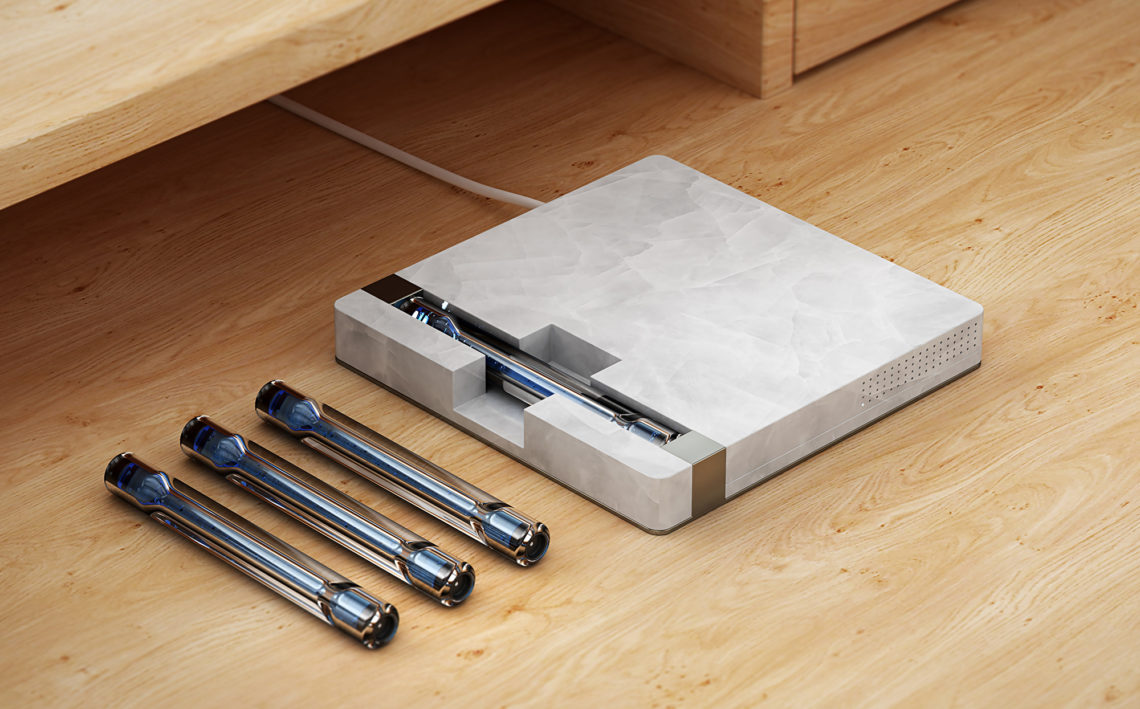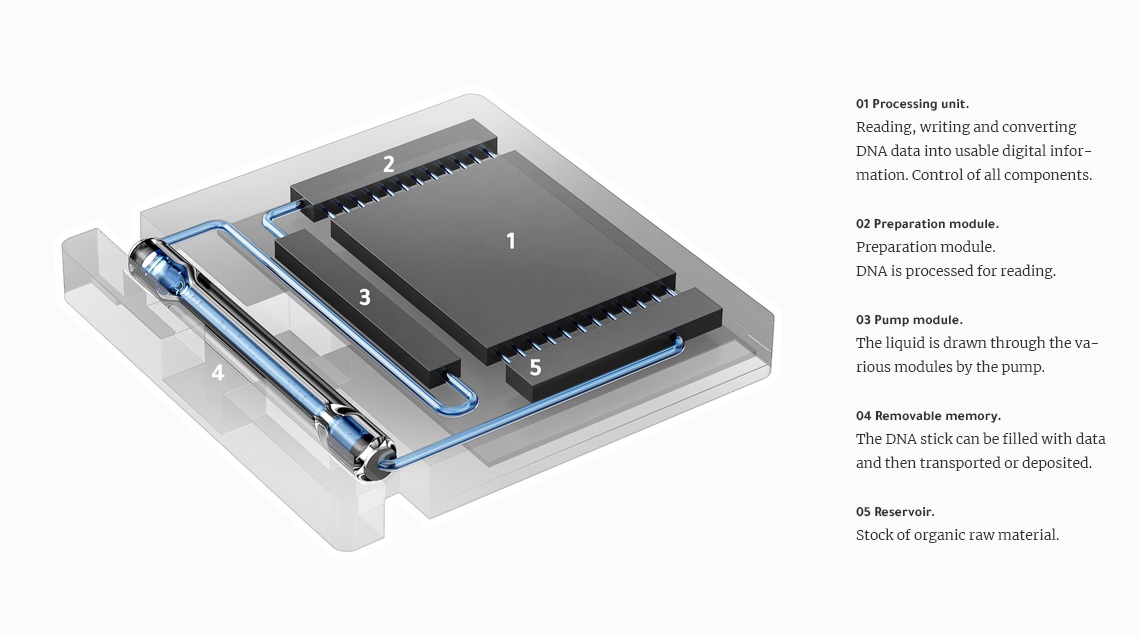
DNAnDATA
DNA as data storage.
_____ DNAnDATA is a DNA-based data storage. Digital data is translated into DNA molecules using a reading and writing device and spatially concentrated via the molecular properties of DNA. The data can be physically stored as a liquid and retrieved as needed. In this way, more than 200,000 terabytes of data can be stored in one gram of DNA.
Intention
_____ DNA is data: In it, the genetic information of living beings is composed of 4 bases in pairs in a long strand and its sequence determines the expression of organisms/gender/species et cetera (e.g. ACGGTACGGGCAT). Cell-internal mechanisms reproduce the DNA before cell division or prepare it for reproduction. These mechanisms can be adjusted and thus allow the manipulation and reading out of the sequence of the base pairs.
DNAnDATA regards the molecule merely as a mathematical object in the structure of which digital data can be stored. Almost by chance, this molecule is also the essential data set for the biological composition of an organism. In this case, DNA is taken out of context in an abstract way, purely in relation to its molecular properties. DNA as a symbol of biological individuality and genetic information becomes what it actually is: deoxyribonucleic acid.

Function
_____ Digital information is stored in the binary system – in other words, in 0 and 1 (example 0110101100). If a value of 1 and 0 is now assigned to the bases, digital information can be read from the sequence in the DNA. According to this idea, DNA can be written in such a way that it can be used as an equivalent for information technology products such as computers: A DNA strand can then represent a music file, a text document or a video game, for example. The human genome corresponds to 3.2 billion base pairs – converted into information, this corresponds to about 1400 megabytes of data. The compression of the data in form of DNA is correspondingly large. Extrapolated this means: 1 gram of DNA would correspond to almost 215 petabytes of data – 215,000,000 gigabytes.
The size specified in DNAnDATA corresponds to almost 500,000 terabytes at 2.5 grams of DNA. DNA is stored in a carrier liquid, so the data storage is more like a liquid container. To read the DNA, the liquid is drawn into an analyser, analysed and converted into useful data. Glass is particularly low in reaction and is suitable as a material for the container, as no interactions between glass and the DNA molecules can take place. The container is additionally coated with UV protection so that the UV radiation does not lead to changes in the DNA. Therefore an enormous durability of the data can be expected (see extractable DNA of prehistoric fossils). The reader device – formerly a laboratory instrument – has become an object of design that can be placed on the desk at home.

?
Can plants spread computer viruses?
Can I download people?
Is it possible to produce foreign DNA and deposit it at a crime scene?
Can I always carry important data inside me? In my blood?